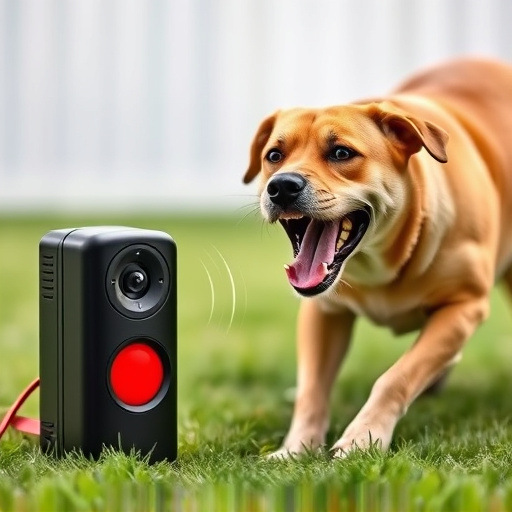Pet owners seeking humane behavior correction tools for their dogs face a choice between rechargeable and disposable power sources. Rechargeables, though more expensive upfront, offer long-term cost savings, environmental benefits, and consistent performance through static electricity. Disposables provide immediate convenience but require frequent replacement, accumulating costs. Key considerations include sustainability, effectiveness, and ethical use, with adjustable stimulus settings based on the pet's needs. Both options should be used responsibly, leveraging positive reinforcement for optimal results.
“Discover the revolutionary world of Electronic Pet Behavior Correction Tools (E-collars) in this comprehensive guide. From understanding their mechanism to evaluating rechargeable vs disposable dog repellent power, we demystify these devices. Learn how they work, explore safety and effectiveness concerns, and understand the ethical implications. This article offers a balanced perspective, helping pet owners make informed decisions regarding E-collar use, particularly when considering rechargeable versus disposable options.”
- Understanding Electronic Pet Behavior Correction Tools: A Comprehensive Overview
- Rechargeable vs Disposable Dog Repellent Power: Unlocking the Benefits and Considerations
- Safety, Effectiveness, and Ethical Implications: Navigating the Landscape of E-Collars for Pets
Understanding Electronic Pet Behavior Correction Tools: A Comprehensive Overview
Electronic pet behavior correction tools have gained popularity as a humane alternative to traditional punishment methods for training animals. These devices use electric shocks or vibrations to deter unwanted behaviors, but they do so without causing physical harm or pain. Understanding how they work and choosing between rechargeable versus disposable options is key to effective, yet gentle, pet training.
Rechargeable models offer the advantage of cost-effectiveness in the long run as they can be used repeatedly after a single purchase. They are also more environmentally friendly due to reduced battery waste. On the other hand, disposable dog repellents are convenient for travel or situations where recharging isn’t feasible, but their one-time use means frequent replacement is necessary. The choice between them depends on your lifestyle and specific training needs.
Rechargeable vs Disposable Dog Repellent Power: Unlocking the Benefits and Considerations
When considering electronic pet behavior correction tools, one key factor to explore is the power source: rechargeable vs disposable dog repellent power. Rechargeable options offer a sustainable and cost-effective solution for long-term use. These devices can be continuously charged, ensuring an endless supply of static electricity to deter unwanted behaviors like barking or jumping on furniture. This eco-friendly approach not only saves money but also reduces electronic waste, making it a popular choice among pet owners conscious of their environmental impact.
On the other hand, disposable dog repellents provide a quick and easy solution, especially for those needing a temporary fix. These devices use replaceable batteries that can be easily disposed of once drained, offering immediate results but with limited longevity. While they might be more convenient for short-term issues or travel, disposable options can add up in cost over time compared to their rechargeable counterparts. Understanding the benefits and considerations of each power source empowers pet owners to make informed decisions based on their specific needs and values.
Safety, Effectiveness, and Ethical Implications: Navigating the Landscape of E-Collars for Pets
When considering electronic pet behavior correction tools, such as e-collars (also known as remote training collars), safety, effectiveness, and ethical implications are paramount. These devices emit a safe but noticeable stimulus to correct unwanted behaviors, with the aim of teaching pets new habits. However, not all e-collars are created equal; understanding the difference between rechargeable and disposable options is crucial. Rechargeable models offer a more sustainable and cost-effective solution, as they can be used repeatedly and provide longer-lasting power compared to their disposable counterparts.
Effectiveness depends on factors like frequency, intensity, and duration of the stimulus, which should be adjusted according to the pet’s size, breed, and sensitivity. While e-collars can be effective in modifying behavior, ethical considerations cannot be overlooked. Some critics argue that these devices may cause stress or discomfort to animals, especially if not used properly. Therefore, responsible use involves adhering to manufacturer guidelines, consulting with a professional trainer or veterinarian, and always prioritizing positive reinforcement training methods as the primary means of pet education.
Electronic pet behavior correction tools, particularly rechargeable vs disposable dog repellent power devices, offer a modern approach to training. By understanding the safety, effectiveness, and ethical considerations, pet owners can make informed choices. While both options have their merits, rechargeables promote sustainability and long-term use, contrasting with disposables’ immediate impact but limited lifespan. Ultimately, the best choice depends on individual preferences and pets’ unique needs, emphasizing responsible and humane training methods.
